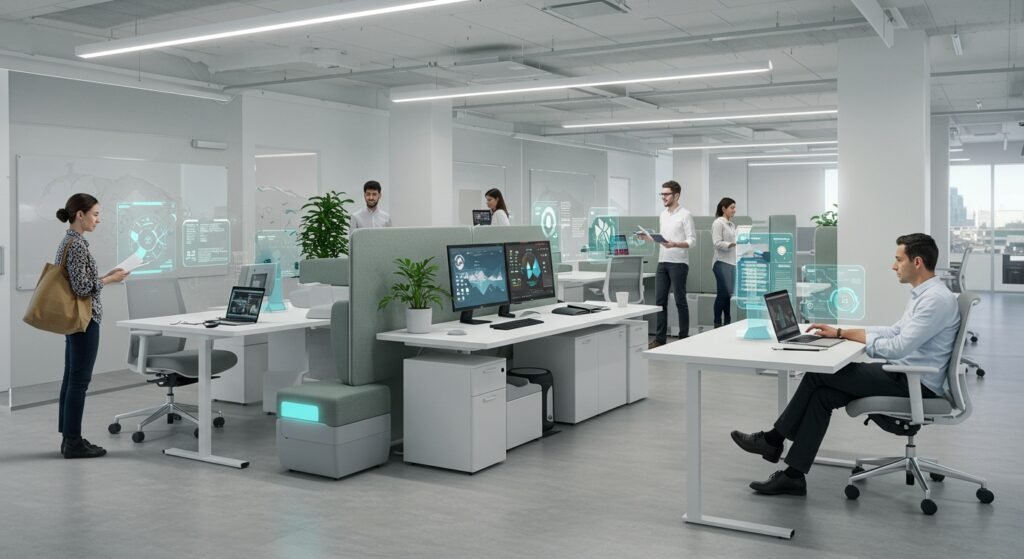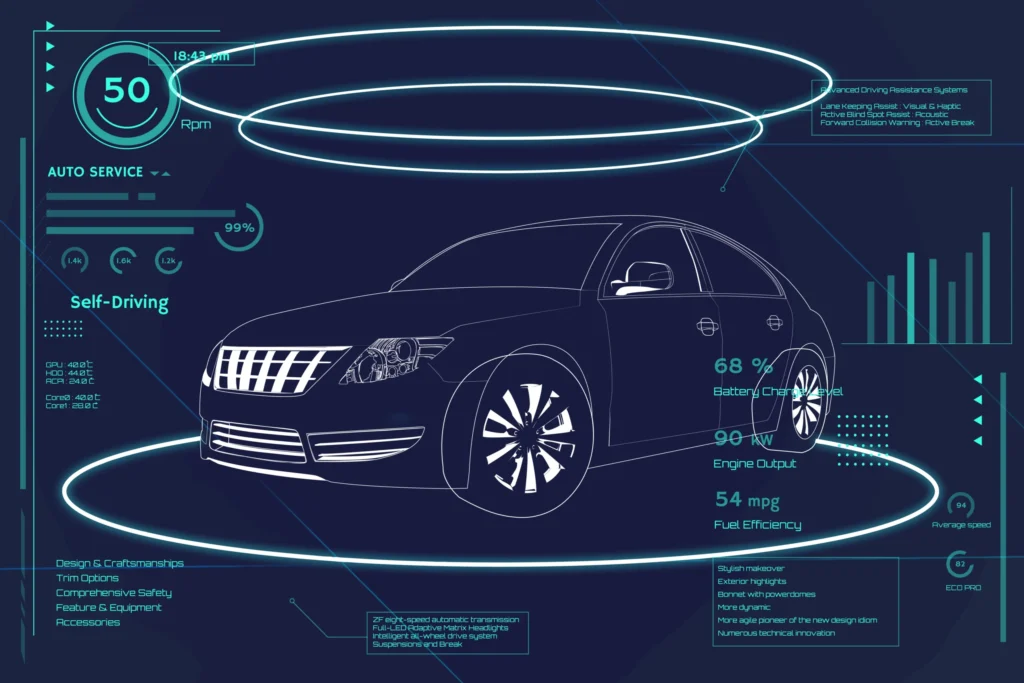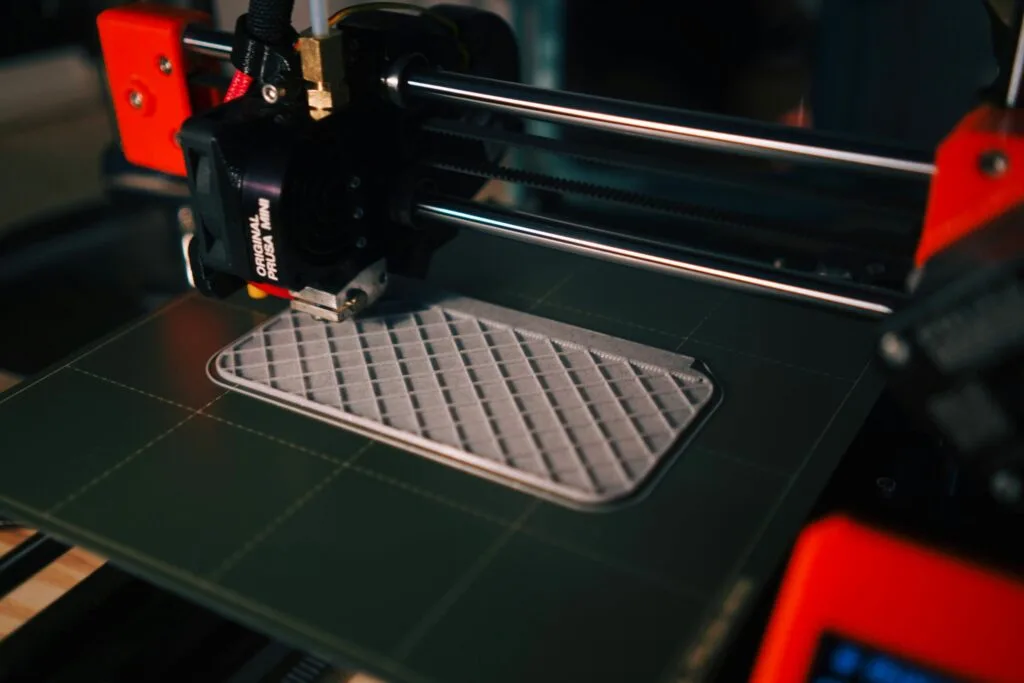The landscape of work is perpetually evolving, pushing the boundaries of how we interact with our environments and tools. This continuous change necessitates a fresh look at the principles that govern human comfort, efficiency, and safety. Welcome to the exploration of the New Frontiers in Ergonomics, a field that is rapidly integrating cutting-edge technology and interdisciplinary insights to redefine workplace design and human-system interaction.
Table of Contents
- AI and Robotics in the New Frontiers in Ergonomics
- Wearable Technology for Health Monitoring
- Cognitive Ergonomics: Beyond Physical Stress
- Sustainable and Green Ergonomics Practices
- Challenges and Future Outlook in Ergonomics
AI and Robotics in the New Frontiers in Ergonomics
Artificial Intelligence (AI) and robotics are no longer confined to manufacturing lines; they are becoming integral to ergonomic solutions. AI-powered systems can analyze vast datasets on human movement, posture, and task performance, offering personalized ergonomic recommendations in real-time. For instance, smart office chairs equipped with AI can learn user habits and adjust proactively, preventing strain. Robotics are also being deployed to assist with physically demanding tasks, reducing the risk of musculoskeletal injuries and allowing human workers to focus on more complex, less strenuous activities. This integration marks a significant leap from traditional ergonomic assessments.
Predictive Analytics for Workplace Safety
Beyond real-time adjustments, AI’s capability in predictive analytics is revolutionizing workplace safety. By analyzing historical data on incidents, near-misses, and worker fatigue patterns, AI algorithms can identify high-risk situations before they occur. This allows companies to implement preventative measures, such as adjusting shift schedules, optimizing workstation layouts, or providing targeted training, thereby significantly reducing occupational hazards. The future of industrial engineering will increasingly rely on these data-driven insights.
Wearable Technology for Health Monitoring
Wearable devices, from smartwatches to specialized sensors embedded in clothing, are becoming powerful tools for ergonomic monitoring. These devices can track biometric data, movement patterns, and environmental factors like temperature and air quality. For instance, a construction worker wearing a smart vest might receive an alert if their posture indicates potential back strain, or if their core body temperature suggests heat stress. This continuous, non-invasive monitoring empowers individuals and employers to make informed decisions about health and safety. You can learn more about how these technologies are being applied in various industries by visiting the International Ergonomics Association website.
Real-time Feedback Systems
The immediate feedback provided by wearable technology is crucial. Imagine a factory worker receiving an instant vibration alert on their wrist when they lift an object incorrectly, or a data entry clerk getting a subtle nudge to take a micro-break after prolonged typing. These real-time interventions help to correct poor habits on the spot, preventing chronic issues from developing and fostering a culture of self-awareness regarding ergonomic practices.
Cognitive Ergonomics: Beyond Physical Stress
While physical ergonomics has traditionally focused on the body, the New Frontiers in Ergonomics increasingly emphasizes cognitive ergonomics – the study of how mental processes affect human interaction with systems. This includes factors like mental workload, decision-making, human-computer interaction, and stress. In an age of information overload and complex digital interfaces, designing systems that reduce cognitive strain is paramount. This involves intuitive user interfaces, clear information display, and reducing unnecessary distractions to optimize mental performance and reduce burnout.
Designing for Mental Well-being
Beyond just task efficiency, cognitive ergonomics now deeply considers mental well-being. This involves designing work environments and processes that minimize stress, enhance focus, and promote a healthy psychological state. Factors like noise levels, lighting, access to natural light, and even the organization of digital information all play a role. Understanding these nuances is critical for creating holistic workplace solutions. For more on creating supportive work environments, see our article on Exploring Workplace Wellness.
Sustainable and Green Ergonomics Practices
As global environmental concerns grow, ergonomics is also embracing sustainability. Sustainable ergonomics considers the entire lifecycle of products and systems, from raw material extraction and manufacturing to usage and disposal, ensuring minimal environmental impact while maximizing human well-being. This includes designing products that are durable, repairable, and recyclable, and optimizing energy consumption in workplaces.
| Ergonomic Trend | Impact on Workplace | Sustainability Link |
|---|---|---|
| AI-driven Customization | Personalized comfort, reduced injuries | Optimized resource use via predictive maintenance |
| Wearable Health Tech | Proactive health monitoring, safety | Reduced healthcare waste from preventable injuries |
| Cognitive Load Reduction | Improved mental well-being, focus | Efficient use of human capital, less burnout |
| Biomimicry in Design | Natural movement, comfort | Use of sustainable materials, energy efficiency |
Challenges and Future Outlook in Ergonomics
Despite the exciting advancements, integrating these New Frontiers in Ergonomics presents challenges. Data privacy concerns with wearable tech, the ethical implications of AI in monitoring workers, and the significant investment required for advanced ergonomic solutions are key hurdles. However, the future of ergonomics is undeniably bright. As technology becomes more sophisticated and affordable, and as societal awareness of well-being in the workplace increases, we can expect further innovations. The convergence of physical and cognitive ergonomics, driven by data and smart technologies, will lead to truly integrated human-centric design, ensuring healthier, more productive, and more sustainable work environments for everyone.


